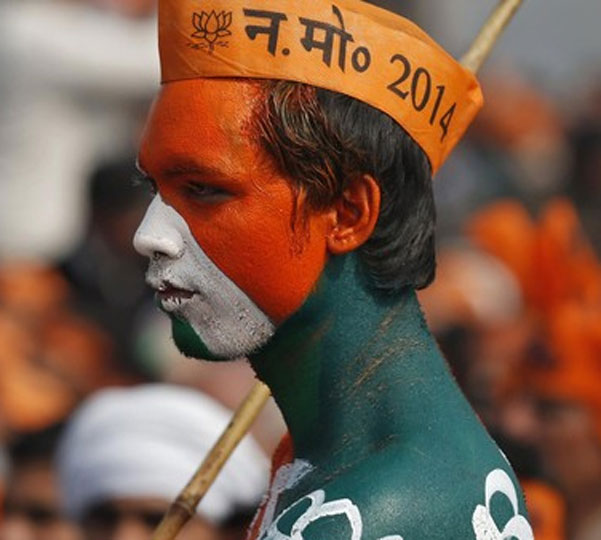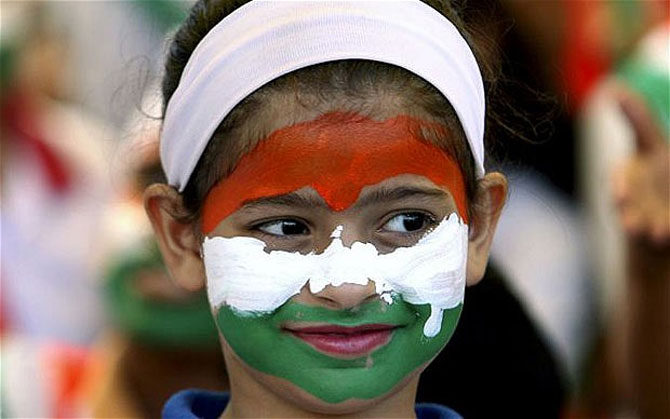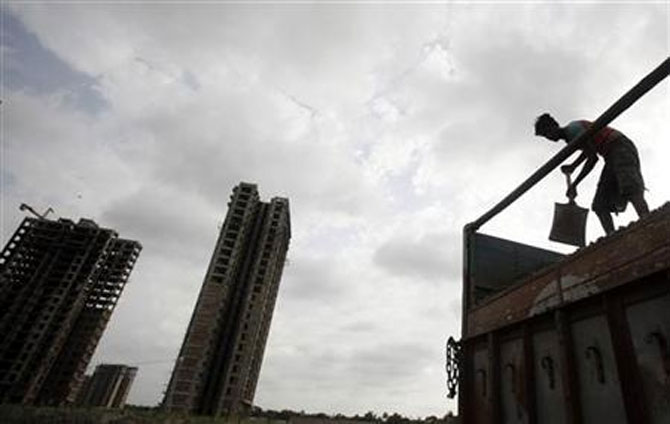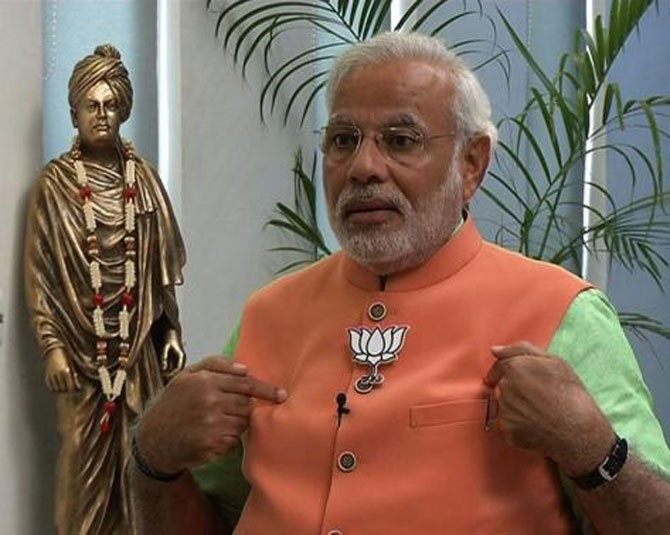 | « Back to article | Print this article |
'Gujarat model is good, but the highest growth rate is in Bihar'
Even though present times were fraught with challenges, there is still inherent, vast and untapped opportunity in India, concludes the 10th India Business Conference at Columbia Business School.
Economists, including Montek Singh Ahluwalia, deputy chairman, India’s Planning Commission, and Nobel Laureate Joseph Stiglitz, a Professor at Columbia University, took stock of the Indian economy in the past 10 years and what the new government would need to focus on after the general election, at the 10th India Business Conference at Columbia Business School.
The student-led organising committee noted that though present times were fraught with challenges, it was convinced that there is inherent, vast and untapped opportunity waiting to be addressed.
"In keeping with this sentiment, the theme of this year's conference is Inspiring India," said Sana Gabula, MBA class of 2014 and one of the main student organisers of the event.
At the day-long conference, the speakers noted the laudable performance of India along with other emerging markets despite the downturn in the global economy since the 2008-09 Lehman Brothers collapse and the domino effect that it had on the world.
But they also reminded the 100-plus members of the audience, most of them CBS students, that more needs to be done in terms of healthcare, education, infrastructure and agriculture after a new government comes to power.
Click on NEXT for more...
'Gujarat model is good, but the highest growth rate is in Bihar'
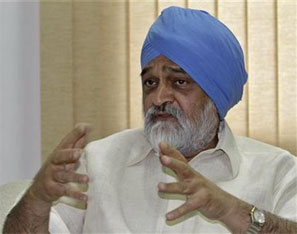 Ahluwalia, image, left, who addressed the conference through video from New Delhi and was the opening keynoter, told the audience not to be discouraged if newspaper reports focused only on controversies.
Ahluwalia, image, left, who addressed the conference through video from New Delhi and was the opening keynoter, told the audience not to be discouraged if newspaper reports focused only on controversies.
"In the last 10 years, there have been a lot of positive changes in India," he said. "I think there is a concern that we have run into a lot of constraints. It happens when an economy is transitioning to a high growth rate. Rapid expansion runs into other constraints."
He added, "As Reserve Bank of India Governor Raghuram Rajan said recently, and I agree with him, global factor is one of the reasons why growth has slowed down, but it is not the only factor. Domestic factors are the other reasons for this. And Rajan said two-thirds of the slowdown is due to domestic factors and one third is global."
Ahluwalia said he was optimistic about the years ahead: "When you have a heavily contested election after five years there is an inevitable uncertainty about the outcome. Even investors tend to hold back making large commitments. But I think in the years ahead, both the global economy and the Indian economy are actually going to do a lot better."
Click on NEXT for more...
'Gujarat model is good, but the highest growth rate is in Bihar'
He said that if one looked at the manifesto of the two major parties in India, there would be a surprising amount of overlap.
"Everybody wants growth, everybody wants to be inclusive and everybody believes that infrastructure is very important and that there is need to do more for healthcare and education," he said.
"I think in the last year or so, there has been concern about whether India has become what Morgan Stanley called the “fragile five”. With the end of the economic boom and a very slow recovery, there has been a lot of uncertainty and concern in the financial world, that developing countries run the risk and are vulnerable.
"I think that we have recognised that and have already taken steps. If you look at India today compared to India a year ago, the vulnerability portion in terms of macroeconomic fragilities is significantly better."
He added, "I think next year the economy will show an upturn. I think in India there are a number of policies that are in the pipeline for which I believe there is enough political support."
Click on NEXT for more...
'Gujarat model is good, but the highest growth rate is in Bihar'
 To a question from the audience whether the Gujarat model was good for the rest of India, Ahluwalia said, "Every state in India, whether Haryana, Bihar or Tamil Nadu, wants to attract foreign investment or capital. You talk about Gujarat having the highest growth rate, but the fact is that it has high growth rate.
To a question from the audience whether the Gujarat model was good for the rest of India, Ahluwalia said, "Every state in India, whether Haryana, Bihar or Tamil Nadu, wants to attract foreign investment or capital. You talk about Gujarat having the highest growth rate, but the fact is that it has high growth rate.
"The highest growth rate is in Bihar. But there is no dispute that Gujarat traditionally has been a well-performing state. Gujaratis are very hard-working and industrious. So the Gujarat model is good for political currency, but I am not sure what it exactly means.
"I think every other chief minister will claim their state’s model is good, but they may not call it as Gujarat model and might call it Haryana model or some such thing."
Stiglitz, the second keynoter, praised India’s economic performance by and large in the past 10 years and how it initially managed the 2008-09 crisis successfully. He also mentioned five priority areas for the new government to focus on, including a sustainable model for agriculture, a revamped energy policy and addressing the issues infrastructure deficit and tax evasion.
"If you talk about inclusive growth, you have to pay importance to agriculture because a large number of the population depends on agriculture," he said. "But its growth has been much slower than the rest of the economy. Slow growth is not sustainable."
Click on NEXT for more...
'Gujarat model is good, but the highest growth rate is in Bihar'
Ajay Banga, chief executive officer, MasterCard, and Vik Malhotra, chairman-Americas, Mckinsey & Company, also keynoted the conference.
Banga too talked about the need to grow sustainably. He mentioned that China had to create a deeper domestic consumption pool and this applied as much to the United States as to any other country, including India.
"The other part of sustainability has to do with the fact that society needs to maintain its equity. There is an unsustainable social stress and this will crop up together if you are not careful about sustainability," he said.
The conference included panel discussions on subjects like 'Innovation and Entrepreneurship' and 'From Chicken Tikka Masala to Michelin Stars', alluding to the success of Indians in the hospitality industry in the US and Europe.
But the panelists in the latter, including Hemant Oberoi, corporate chef, Taj Group; Zoravar Kalra, managing director, Massive Restaurants, and son of legendary chef Jiggs Kalra; focused more on the nutritional value of Indian and other cuisines than on the business aspect of the industry overseas.
